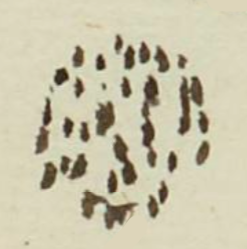Huauhtli (MH784v)
Huauhtli (MH784v)
This black-line drawing of the simplex glyph for the personal name Huauhtli ("Amaranth") is attested here as a man's name. The glyph consists of a group of dots that are meant to represent amaranth (huauhtli) in seed form.
Stephanie Wood
Forty-five species of amaranth are native to Mesoamerica. See Octavio Paredes-Lopez, Amaranth Biology, Chemistry, and Technology (2018). Also, "eighteen imperial granaries were filled with this seed each year, each granary having a capacity of 4,000 to 5,000 fanegas, or about 9,000 bushels," according to a study by William Edward Safford, in the Proceedings of the Nineteenth International Congress of Americanists (1917), 286.
Stephanie Wood
fraco vauhtli
Francisco Huauhtli
Stephanie Wood
1560
Jeff Haskett-Wood
nombres de hombres, amaranto, semillas, comida

huauh(tli), amaranth, https://nahuatl.wired-humanities.org/content/huauhtli
Stephanie Wood
Matrícula de Huexotzinco, folio 784v, World Digital Library, https://www.loc.gov/resource/gdcwdl.wdl_15282/?sp=643&st=image
This manuscript is hosted by the Library of Congress and the World Digital Library; used here with the Creative Commons, “Attribution-NonCommercial-ShareAlike 3.0 License” (CC-BY-NC-SAq 3.0).





